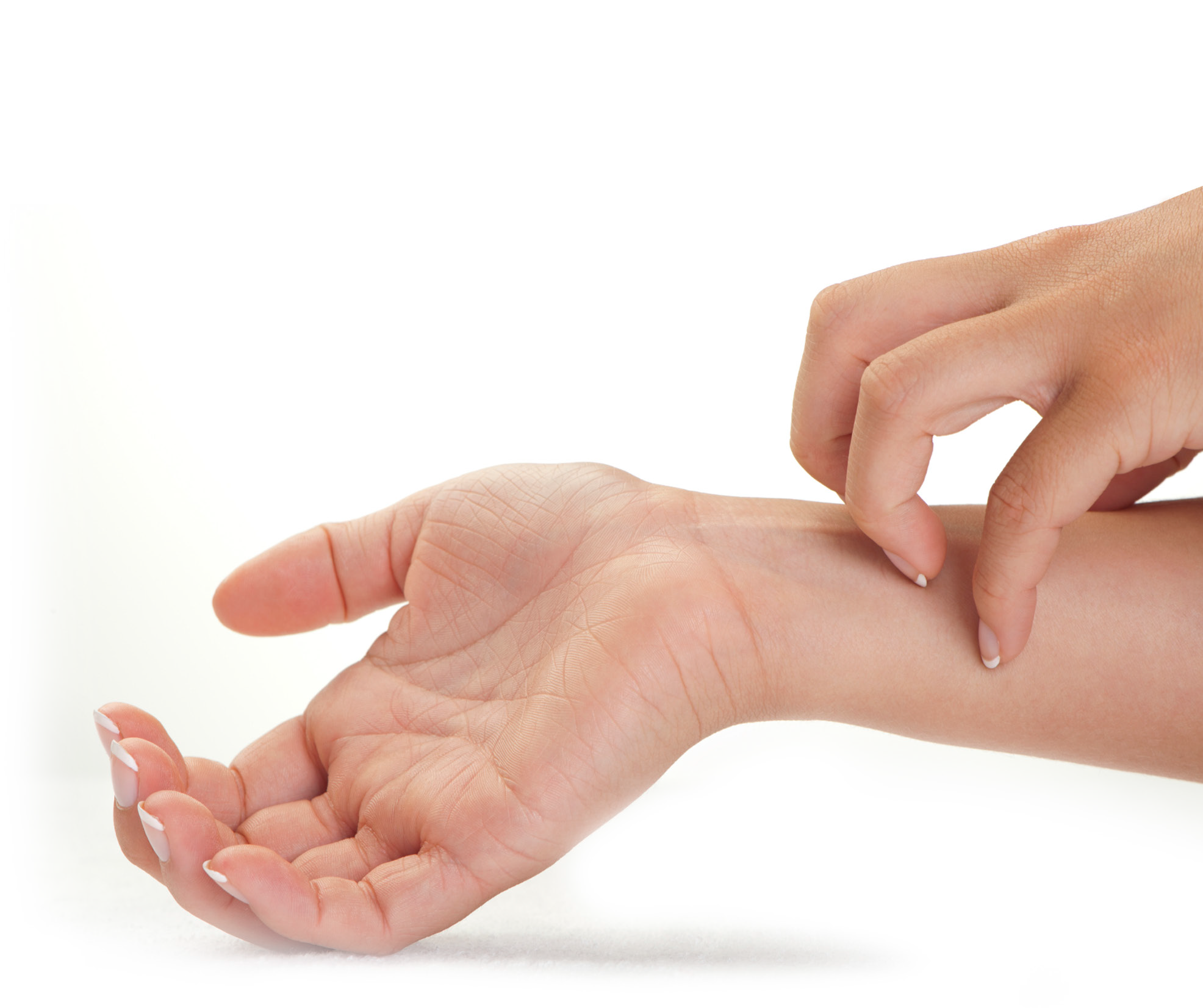Everything you need to know about Eczema

Eczema is a condition that causes the skin to become itchy, red, dry and cracked. It is a longterm (chronic) condition, but can improve over time, especially in children.
Eczema usually has periods of flare-ups and improvement.
Eczema can occur all over the body, but is most common on the hands (especially fingers), the insides of the elbows or backs of the knees, and the face and scalp in children.
Contact eczema occurs at the place in which the skin comes in contact with a sensitizing material like nickel or perfume.
The severity of eczema can vary from person to person. Scratching makes the skin bleed, causes secondary infections and makes itching worse, and a cycle of itching and regular scratching may develop. This can lead to sleepless nights and difficulty in concentrating at school or work. Later, the affected skin may become darker or lighter.
Signs of an infection
Eczema gets worse with oozing from the skin leaving yellow crust. Skin becomes swollen and sore with high temperature and feeling unwell.
Eczema triggers
Irritants – as soaps, detergents, including shampoo, washing up liquid and bubble bath.
Environmental factors such as cold and dry weather, dampness.
Allergens such as house dust mites, pet fur, pollen and moulds.
Food allergies – such as cows› milk, eggs, peanuts, soya or wheat .
Clothes – such as wool and synthetic fabrics.
Hormonal changes – in women before their period or during pregnancy.
Skin infections.
Atopic eczema is likely to be caused by genes inherited from parents.
Patients have dry skin which is unable to retain sufficient moisture and more likely to react to certain triggers, causing it to become red and itchy e.g. when the air is dry or dusty, or when they are stressed, sweaty, or too hot or too cold.
Treating eczema
There is no cure for eczema, but treatments can ease the symptoms. Many children improve as they get older. The main treatments are:
- Moisturizers) – used every day to control skin dryness.
- Topical corticosteroids – creams and ointments used to reduce swelling and redness during flare-ups.
- Cortisone substitutes include topical pimecrolimus or tacrolimus for sensitive areas.
- Antihistamines for itching. They can either be sedating, or non-sedating. If itching affects sleep, take a sedating antihistamine. But it can cause drowsiness into the following day..
- Self care
Try to reduce the damage from scratching
Scratching damages the skin, causing more eczema to occur.
It causes bleeding and increases the risk of infection or scarring and skin thickens.
Try to gently rub the skin with fingers instead of nails. For the baby, anti-scratch gloves.
Keep nails short and clean. Wear light clothing.
Avoid triggers
Use fine clothing or cotton. Keep the rooms cool, especially the bedroom.
Avoid using soaps or detergents– use soap substitutes.
Dietary changes
Some foods, such as eggs, Kiwi, strawberry and cows milk, can trigger symptoms. Do not make changes to diet without consulting your Doctor.
Emollients
Emollients reduce water loss and cover skin with a protective film. They may have a mild anti-inflammatory role, and can help reduce the number of flare-ups.
Choosing an emollient
- an ointment for very dry skin
- a cream or lotion for less dry skin
- an emollient to use instead of soap
- an emollient to add to bath water or use in the shower
Ointments are the most greasy, but most effective at keeping moisture in the skin. Lotions are the least greasy, and used for acute inflamed or open skin. Creams are in between.
How to use emollients
- Rub gently into the skin in the same direction the hair.
- After a bath or shower, apply while the skin is still moist to keep the moisture in.
During a flare-up, treat with a topical cortisone as emollients are not enough.
Don’t put your fingers into an emollient pot – use a spoon or pump dispenser instead, as this reduces the risk of infection. Never share emollient with other people.
Topical corticosteroids
Cortisone products have different strengths, depending on the severity of eczema and the areas of skin affected. They can be very mild (such as hydrocortisone), moderate or strong. Apply it once a day as there is no evidence of benefit to applying it more often.
When using a topical corticosteroid:
- Apply emollient and the cortisone at a different time of day
- Continue to use it until 48 hours after the flare-up has cleared, so the inflammation under the skin surface is treated
After control of eczema use the topical cortisone every weekend to prevent activity again.
Side effects of cortisone
- thinning of the skin if used in places, as the face, armpit or genital area for too long
- changes in skin color to pale white.
- acne: especially when used on the face in teenagers
- increased hair growth
Cortisone tablets
Used to treat eczema for short periods of five to seven days to control severe flare-ups.
Longer courses causes serious side effects.
Complementary therapies
There is little evidence that herbal remedies are effective
